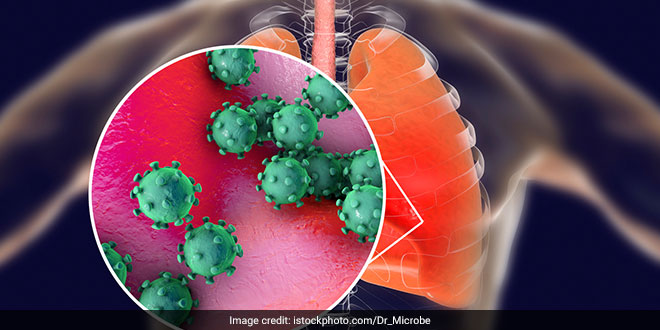Highlights
- Different COVID-19 Patients are exhibiting different symptoms: Experts
- Experts say it will take years to understand how COVID-19 damages organs
- People with weakened immunity are more vulnerable to COVID-19
Washington D.C.: Doctors today across the globe are focusing on treating the inflammatory reactions caused by the coronavirus but more than four months of clinical experience across Europe and North America has shown the pathogen does much more than invade the lungs. It attacks the heart, weakening its muscles and disrupting its critical rhythm. It savages kidneys so badly some hospitals have run short of dialysis equipment. It crawls along the nervous system, destroying taste and smell and occasionally reaching the brain. It creates blood clots that can kill with sudden efficiency and inflames blood vessels throughout the body.
Also Read: CSIR-NAL Develops Non-Invasive Ventilator To Treat COVID-19 Patients
This proves that the widespread recognition the novel virus is far more unpredictable than a simple respiratory virus. The contagion is often believed to attack the lungs in a human body, but doctors fear it may also strike anywhere from the brain to the toes, The Washington Post reported.
Learning about a new disease on the fly, with more than 78,000 deaths in the United States attributed to the pandemic itself, doctors have little solid research to guide them, the Post stated further.
The World Health Organization’s database already listed more than 14,600 papers on Covid-19. Even the world’s premier public health agencies, including the Centers for Disease Control and Prevention, have constantly altered their advice to keep pace with new developments.
“We don’t know why there are so many disease presentations,” said Angela Rasmussen, a virologist at the Center for Infection and Immunity at Columbia University’s Mailman School of Public Health.
“Bottom line, this is just so new that there’s a lot we don’t know,” she stressed.
More than four months of clinical experience across Asia, Europe and North America has shown the pathogen does much more than invade the lungs.
“No one was expecting a disease that would not fit the pattern of pneumonia and respiratory illness,” David Reich, a cardiac anesthesiologist and president of Mount Sinai Hospital in New York City, told the Post.
It can begin with a few symptoms or none at all, then days later, squeeze the air out of the lungs without warning. It picks on the elderly, people weakened by the previous disease, and, disproportionately, the obese. It harms men more than women, but there are also signs it complicates pregnancies.
Last week, doctors warned of a rare inflammatory reaction with cardiac complications among children that may be connected to the virus. On Friday, New York Governor Andrew M. Cuomo announced that 73 children had fallen severely ill in the state and a 5-year-old boy in New York City had become the first child to die of the syndrome. Two more children had succumbed as of Saturday.
That news has shaken many doctors, who felt they were finally grasping the full dimensions of the disease in adults. Mr. Reich said,
We were all thinking this is a disease that kills old people, not kids.
Mount Sinai Hospital in New York has treated five children with the condition. Mr. Reich said each started with gastrointestinal symptoms, which turned into inflammatory complications that caused very low blood pressure and expanded their blood vessels. This led to heart failure in the case of the first child who died.
“The pattern of disease was different than anything else with COVID,” he said.
Of the millions, perhaps billions, of coronaviruses, six were previously known to infect humans.
Four cause colds that spread easily each winter, barely noticed. Another was responsible for the outbreak of severe acute respiratory syndrome that killed 774 people in 2003. Yet another sparked the outbreak of Middle East respiratory syndrome in 2012, which kills 34 per cent of the people who contract it. But few do.
Had SARS or MERS spread as widely as this virus, Rasmussen said, they might have shown the same capacity to attack beyond the lungs. But they were snuffed out quickly, leaving only a small sample of disease and death.
Trying to define a pathogen in the midst of an ever-spreading epidemic is fraught with difficulties. Experts say it will be years until it is understood how the disease damages organs and how medications, genetics, diets, lifestyles and distancing impact its course.
Also Read: Fighting COVID19: Health Ministry To Conduct Population-Based Sero Survey In Select Districts
[corona_data_new]



















